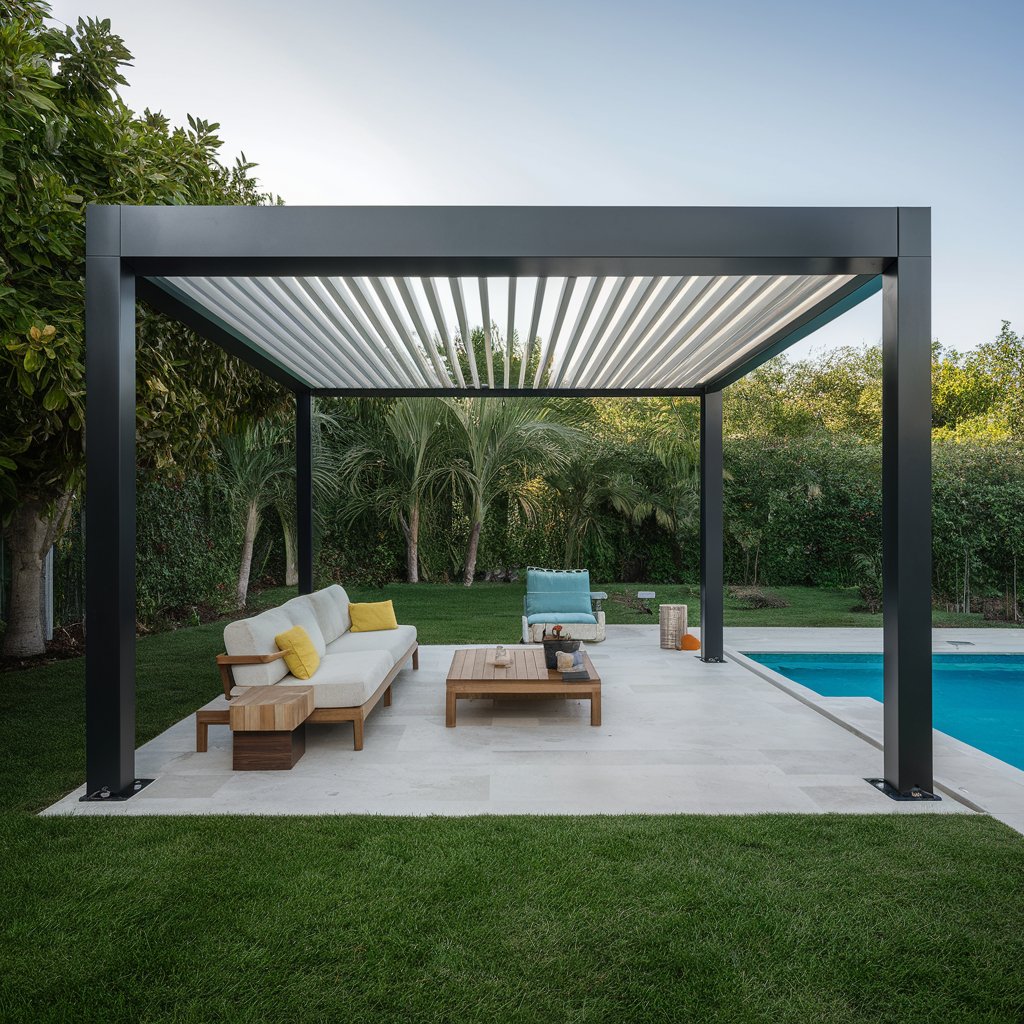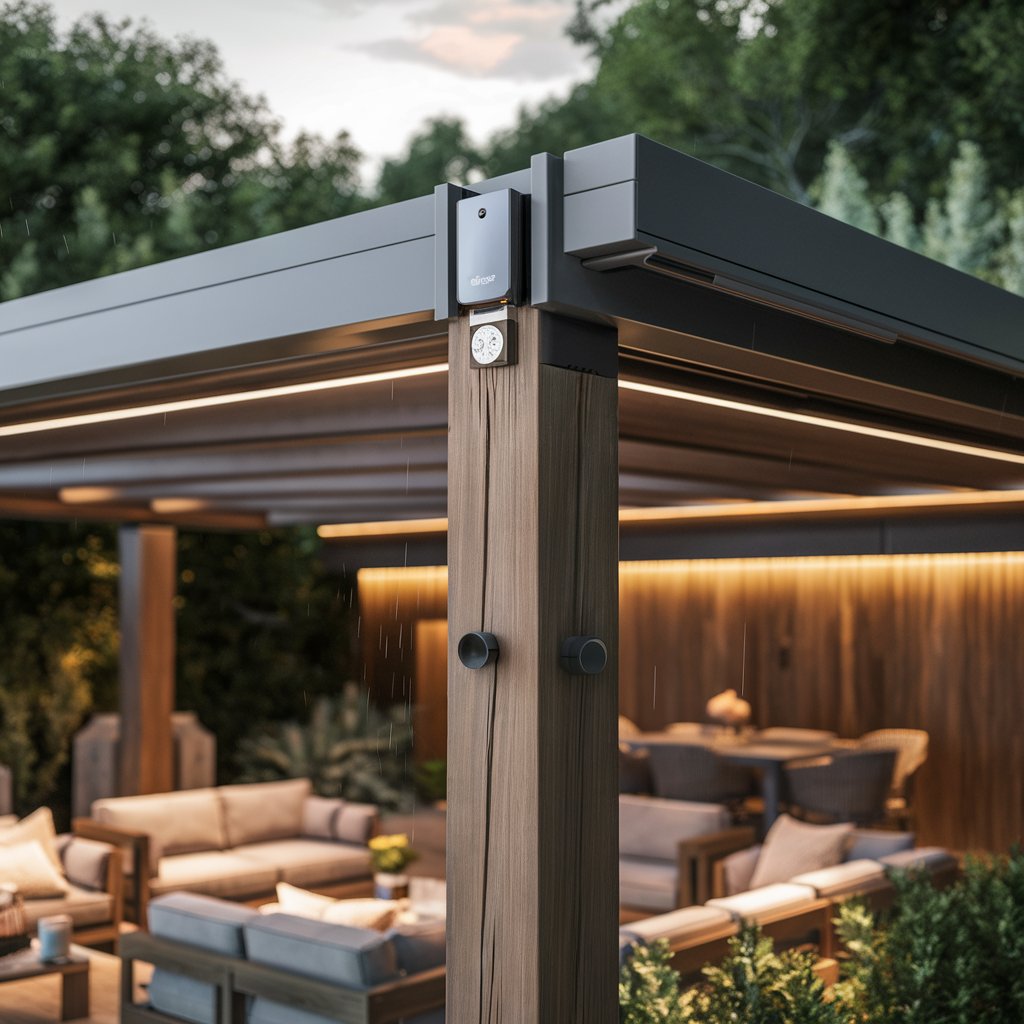Garden architecture, also known as landscape architecture, is the art and science of designing outdoor spaces to create aesthetically pleasing and functional environments. This discipline combines elements of landscape design, horticulture, and architecture to enhance the enjoyment and use of gardens and outdoor areas. From the selection of plants to the incorporation of hardscaping elements, garden architecture involves a holistic approach to creating sustainable and beautiful landscapes. This guide will delve into the various aspects of garden architecture, with a special focus on the use of aluminum in outdoor structures.

1. Landscape Design
Landscape design is the foundation of garden architecture. It involves the careful planning and layout of outdoor spaces to achieve a harmonious balance between natural and built elements.
Layout Planning The initial stage of landscape design involves creating a layout plan that outlines the arrangement of various elements within the garden. This includes pathways, seating areas, water features, and plant beds. The layout should consider the natural topography, existing vegetation, and the intended use of the space.
Site Analysis A thorough site analysis is essential to understand the unique characteristics of the garden area. This includes assessing soil quality, drainage patterns, sunlight exposure, and microclimates. A detailed site analysis helps in making informed decisions about plant selection and hardscaping.
Aesthetic Principles Aesthetic principles play a crucial role in landscape design. Elements such as color, texture, form, and scale need to be thoughtfully integrated to create a visually appealing garden. The use of symmetry, balance, and focal points can enhance the overall design.
2. Plant Selection
Plants are the living components of garden architecture. The choice of plants can greatly influence the appearance and functionality of the garden.
Native Plants Selecting native plants is beneficial for creating sustainable gardens. Native plants are adapted to the local climate and soil conditions, requiring less water and maintenance. They also support local wildlife by providing habitat and food sources.
Seasonal Planting Incorporating seasonal planting ensures that the garden remains vibrant throughout the year. A mix of perennials and annuals can provide continuous blooms, while evergreens offer year-round structure and greenery.
Perennials and Annuals Perennials are plants that live for more than two years, offering long-term beauty and stability to the garden. Annuals, on the other hand, complete their life cycle in one growing season but provide vibrant colors and variety.
3. Hardscaping
Hardscaping refers to the non-living elements in garden architecture. These features add structure and functionality to the garden.
Patios Patios are paved areas that provide outdoor living spaces for relaxation and entertainment. They can be made from various materials such as stone, brick, or concrete. Aluminum-framed furniture is a popular choice for patios due to its durability and low maintenance.
Walkways Walkways guide visitors through the garden and connect different areas. They can be made from natural materials like gravel, stone, or wood, or from manufactured materials such as concrete or pavers. Aluminum edging can be used to define walkways and prevent the spread of plants.
Retaining Walls Retaining walls are used to manage slopes and create level planting areas. They can be constructed from materials like stone, brick, or concrete. Aluminum posts and railings can be incorporated into retaining walls for added stability and a modern look.
Fencing Fencing provides privacy, security, and boundary definition. Aluminum fencing is a popular choice due to its strength, resistance to rust, and minimal maintenance requirements.
4. Water Features
Water features add a soothing and dynamic element to garden architecture. They can range from simple birdbaths to elaborate fountains and ponds.
Ponds Ponds create a natural habitat for aquatic plants and wildlife. They can be designed with features like waterfalls, fish, and lilies to enhance their beauty and ecological value.
Fountains Fountains add a focal point to the garden with their movement and sound. They can be freestanding or integrated into other structures like walls or ponds. Aluminum is often used in the construction of fountain basins and nozzles due to its durability.
Waterfalls Waterfalls provide a dramatic visual and auditory effect. They can be incorporated into ponds or standalone features, often using natural stones and plants to create a seamless look.
5. Outdoor Structures
Outdoor structures provide shelter, shade, and architectural interest in garden architecture. They can be made from various materials, including wood, steel, and aluminum.
Pergolas Pergolas are open structures with cross beams and no solid roof, providing partial shade and a support structure for climbing plants. Aluminum pergolas are particularly popular for their modern aesthetic and low maintenance.
Gazebos Gazebos are freestanding structures with a solid roof, offering full shade and a sheltered space for relaxation or dining. Aluminum-framed gazebos are resistant to rust and weather, making them a durable choice.
Arbors Arbors are smaller structures that often serve as an entryway or focal point in the garden. They support climbing plants and can be made from wood, metal, or aluminum. Aluminum arbors are lightweight and easy to install.
Greenhouses Greenhouses extend the growing season and provide a controlled environment for plants. Aluminum is commonly used in greenhouse frames due to its strength and resistance to corrosion.
6. Lighting
Proper lighting enhances the usability and aesthetics of a garden after dark. It can highlight features, ensure safety, and create ambiance.
Pathway Lighting Pathway lighting ensures safe navigation through the garden at night. Solar-powered aluminum lights are a popular choice for their energy efficiency and weather resistance.
Spotlights Spotlights can be used to highlight specific features such as statues, water features, or architectural elements. Aluminum housings are often used for their durability and sleek appearance.
Ambient Lighting Ambient lighting creates a warm and inviting atmosphere. This can be achieved with string lights, lanterns, or built-in fixtures. Aluminum fixtures are favored for their longevity and ease of maintenance.
7. Furniture and Decor
Garden furniture and decor enhance the functionality and visual appeal of outdoor spaces. The choice of materials can significantly impact durability and style.
Outdoor Seating Outdoor seating includes chairs, benches, and loungers. Aluminum-framed furniture is lightweight, resistant to rust, and available in various styles, making it a popular choice for gardens.
Planters Planters allow for flexible and mobile gardening. Aluminum planters are durable and available in contemporary designs, adding a modern touch to the garden.
Sculptures Sculptures and other decorative elements add personality and focal points to the garden. Aluminum sculptures are valued for their durability and ability to withstand outdoor conditions.
8. Functional Areas
Functional areas in a garden are designed to serve specific purposes, enhancing the overall usability of the space.
Seating Areas Seating areas provide places for relaxation and socializing. They can be integrated into various parts of the garden, such as under a pergola or beside a water feature. Aluminum furniture is often used in these areas for its durability and ease of maintenance.
Play Areas Play areas are designed for children’s activities. They can include features like sandboxes, swings, and playhouses. Aluminum is a safe and sturdy material for play equipment and fencing.
Vegetable Gardens Vegetable gardens allow for the cultivation of edible plants. Raised beds made from aluminum provide a modern look and prevent soil compaction, promoting healthy plant growth.
9. Sustainability
Sustainability is a crucial aspect of modern garden architecture. It involves practices that reduce environmental impact and promote ecological balance.
Rainwater Harvesting Rainwater harvesting systems collect and store rainwater for garden use. Aluminum gutters and storage tanks are commonly used due to their durability and resistance to corrosion.
Composting Composting converts organic waste into nutrient-rich soil. Aluminum compost bins are durable and resistant to pests, making them a practical choice for sustainable gardening.
Xeriscaping Xeriscaping is a landscaping method that reduces the need for irrigation by using drought-tolerant plants and efficient water use techniques. Aluminum edging and decorative elements can be used to create a clean and modern xeriscape design.
10. Historical Styles
Garden architecture has evolved over centuries, with various historical styles influencing modern design. Understanding these styles can inspire contemporary gardens.
Formal Gardens Formal gardens are characterized by symmetry, geometric shapes, and meticulous maintenance. They often feature elements like topiary, parterres, and fountains. Aluminum edging and fencing can be used to maintain clean lines and structure.
Cottage Gardens Cottage gardens have a more relaxed and informal style, with dense plantings of flowers, herbs, and vegetables. Aluminum arbors and trellises can support climbing plants and add a modern twist to the traditional design.
Japanese Gardens Japanese gardens emphasize natural beauty, simplicity, and tranquility. Elements such as rocks, water, and carefully pruned plants are integral to the design. Aluminum lanterns and water basins can be incorporated to blend modern materials with traditional aesthetics.
Mediterranean Gardens Mediterranean gardens are designed for hot, dry climates and often feature drought-tolerant plants, terracotta pots, and gravel pathways. Aluminum pergolas and furniture can provide shade and complement the rustic style.
Conclusion
Garden architecture is a multifaceted discipline that combines the art of design with the science of horticulture and the principles of sustainability. From the careful selection of plants to the thoughtful integration of hardscaping elements and outdoor structures, every aspect contributes to creating a beautiful and functional outdoor space. The use of aluminum in garden architecture offers numerous benefits, including durability, low maintenance, and a modern aesthetic. Whether designing a small backyard garden or a large public park, understanding and applying the principles of garden architecture can transform outdoor spaces into havens of beauty and tranquility.


